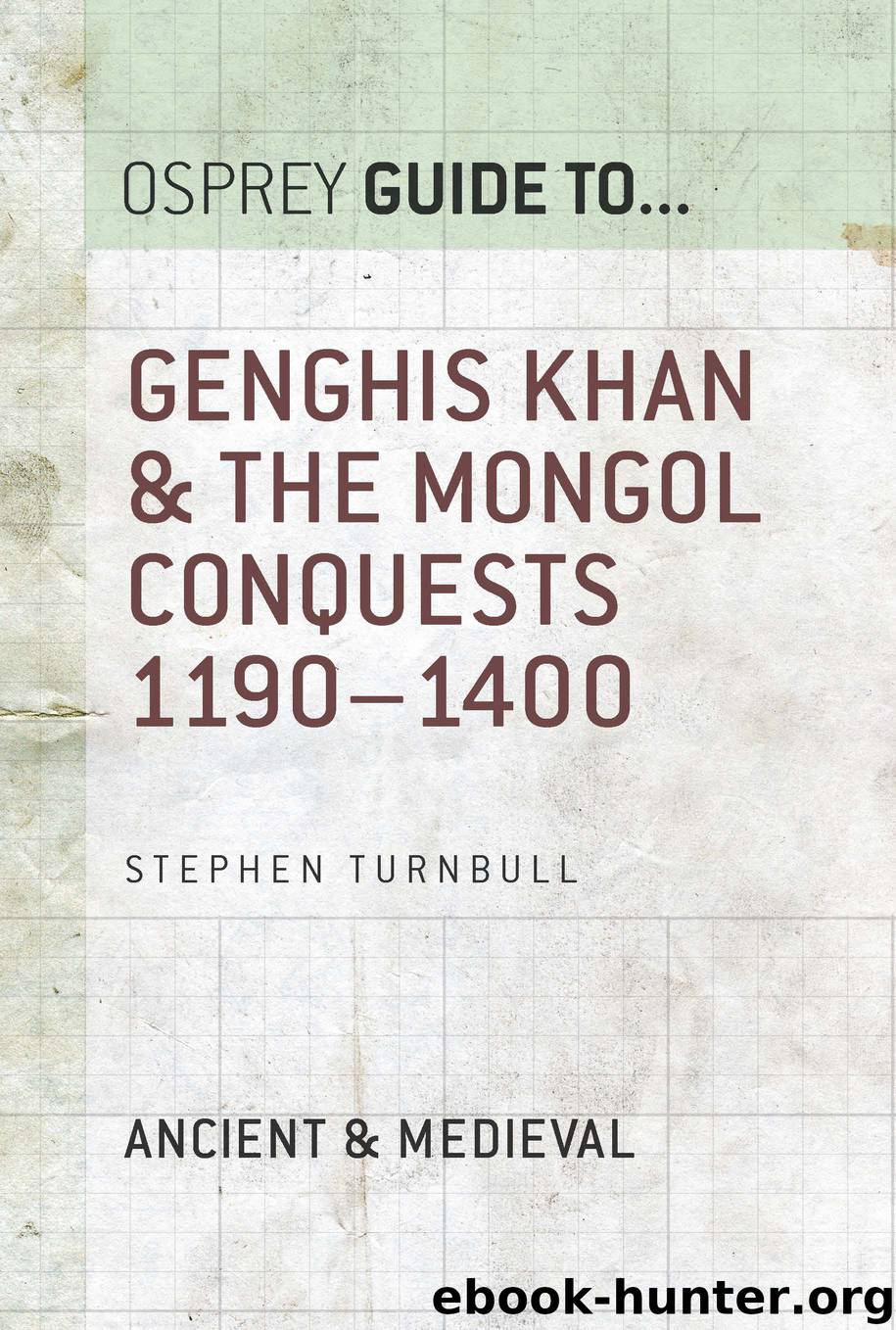Genghis Khan & the Mongol Conquests 1190–1400 by Stephen Turnbull

Author:Stephen Turnbull
Language: eng
Format: epub
Tags: Genghis Khan & the Mongol Conquests 1190–1400
ISBN: 9781472810212
Publisher: Bloomsbury Publishing
The Middle-Eastern theatre 1251–60
By comparison with the European campaigns of 1237–1242 the Mongol progress in the Islamic world had been slow but steady, but an important development occurred in 1251 when Hulegu was sent on a military campaign into south-west Asia by his brother Mongke, the newly elected Khan. His overall brief was to subject ‘the Western countries and the various lands of the Sultan’.
The destruction of the Assassins
Hulegu left Mongolia in 1253 and took three years to complete the long journey towards his first objective, which was the headquarters of the Ismailis, a heretical sect of Islam otherwise known as the Assassins from their use of the drug hashish. Their use of murder as a political and religious weapon has meant that the word ‘assassin’ has entered our language in a very different context. This was a particularly challenging operation for the Mongols, because the Assassins were based in a series of castles located on the tops of hills within dry valleys near the Caspian Sea in Iran.
The Mongols used large Chinese-style siege crossbows against them, positioning them on mountain peaks opposite the fortresses to give a horizontal trajectory. The siege crossbow is described by Juvaini as an ‘ox’s bow which had been constructed by Khitan craftsmen and had a range of 2,500 paces’. Teams of ‘athletes’ were stationed about 300 yards apart to transport the frames and poles of the collapsible crossbows up the slopes. Hulegu himself commanded from one of these vantage points:
Arrows, which were the shaft of Doom discharged by the Angel of Death, were let fly against these wretches, passing like hail through the sieve-like clouds.
The Assassins used traction trebuchets and hand-held crossbows against any Mongol attackers climbing up on foot. The Mongols also used large fire arrows loosed from their siege crossbows. This won them more ground, and during peace negotiations the Mongols took advantage of the coming and going of the messengers to find more suitable sites for their catapults and to assemble them undisturbed. The next day a general assault began from these new and greatly advantageous positions. The use of the word ‘mangonels’ in the accounts suggest that traction trebuchets had now been added to the Mongol armoury. The Ismailis took what shelter they could from the dual bombardment, but after some fierce fighting the castles surrendered.
Download
This site does not store any files on its server. We only index and link to content provided by other sites. Please contact the content providers to delete copyright contents if any and email us, we'll remove relevant links or contents immediately.
| Africa | Americas |
| Arctic & Antarctica | Asia |
| Australia & Oceania | Europe |
| Middle East | Russia |
| United States | World |
| Ancient Civilizations | Military |
| Historical Study & Educational Resources |
The Daily Stoic by Holiday Ryan & Hanselman Stephen(3116)
The Fate of Rome: Climate, Disease, and the End of an Empire (The Princeton History of the Ancient World) by Kyle Harper(2884)
People of the Earth: An Introduction to World Prehistory by Dr. Brian Fagan & Nadia Durrani(2622)
Ancient Worlds by Michael Scott(2504)
Babylon's Ark by Lawrence Anthony(2438)
Foreign Devils on the Silk Road: The Search for the Lost Treasures of Central Asia by Peter Hopkirk(2393)
The Daily Stoic by Ryan Holiday & Stephen Hanselman(2356)
India's Ancient Past by R.S. Sharma(2308)
MOSES THE EGYPTIAN by Jan Assmann(2283)
The Complete Dead Sea Scrolls in English (7th Edition) (Penguin Classics) by Geza Vermes(2147)
Lost Technologies of Ancient Egypt by Christopher Dunn(2124)
The Earth Chronicles Handbook by Zecharia Sitchin(2106)
24 Hours in Ancient Rome by Philip Matyszak(1978)
Alexander the Great by Philip Freeman(1968)
Aztec by Gary Jennings(1884)
The Nine Waves of Creation by Carl Johan Calleman(1789)
Curse Tablets and Binding Spells from the Ancient World by Gager John G.;(1773)
Before Atlantis by Frank Joseph(1744)
Earthmare: The Lost Book of Wars by Cergat(1719)
